Xiaoxi Wang
AdaSociety: An Adaptive Environment with Social Structures for Multi-Agent Decision-Making
Nov 06, 2024Abstract:Traditional interactive environments limit agents' intelligence growth with fixed tasks. Recently, single-agent environments address this by generating new tasks based on agent actions, enhancing task diversity. We consider the decision-making problem in multi-agent settings, where tasks are further influenced by social connections, affecting rewards and information access. However, existing multi-agent environments lack a combination of adaptive physical surroundings and social connections, hindering the learning of intelligent behaviors. To address this, we introduce AdaSociety, a customizable multi-agent environment featuring expanding state and action spaces, alongside explicit and alterable social structures. As agents progress, the environment adaptively generates new tasks with social structures for agents to undertake. In AdaSociety, we develop three mini-games showcasing distinct social structures and tasks. Initial results demonstrate that specific social structures can promote both individual and collective benefits, though current reinforcement learning and LLM-based algorithms show limited effectiveness in leveraging social structures to enhance performance. Overall, AdaSociety serves as a valuable research platform for exploring intelligence in diverse physical and social settings. The code is available at https://github.com/bigai-ai/AdaSociety.
Balancing the AI Strength of Roles in Self-Play Training with Regret Matching+
Feb 01, 2024Abstract:When training artificial intelligence for games encompassing multiple roles, the development of a generalized model capable of controlling any character within the game presents a viable option. This strategy not only conserves computational resources and time during the training phase but also reduces resource requirements during deployment. training such a generalized model often encounters challenges related to uneven capabilities when controlling different roles. A simple method is introduced based on Regret Matching+, which facilitates a more balanced performance of strength by the model when controlling various roles.
Meta R-CNN : Towards General Solver for Instance-level Low-shot Learning
Sep 28, 2019



Abstract:Resembling the rapid learning capability of human, low-shot learning empowers vision systems to understand new concepts by training with few samples. Leading approaches derived from meta-learning on images with a single visual object. Obfuscated by a complex background and multiple objects in one image, they are hard to promote the research of low-shot object detection/segmentation. In this work, we present a flexible and general methodology to achieve these tasks. Our work extends Faster /Mask R-CNN by proposing meta-learning over RoI (Region-of-Interest) features instead of a full image feature. This simple spirit disentangles multi-object information merged with the background, without bells and whistles, enabling Faster /Mask R-CNN turn into a meta-learner to achieve the tasks. Specifically, we introduce a Predictor-head Remodeling Network (PRN) that shares its main backbone with Faster /Mask R-CNN. PRN receives images containing low-shot objects with their bounding boxes or masks to infer their class attentive vectors. The vectors take channel-wise soft-attention on RoI features, remodeling those R-CNN predictor heads to detect or segment the objects that are consistent with the classes these vectors represent. In our experiments, Meta R-CNN yields the state of the art in low-shot object detection and improves low-shot object segmentation by Mask R-CNN.
Multivariate-Information Adversarial Ensemble for Scalable Joint Distribution Matching
Jul 08, 2019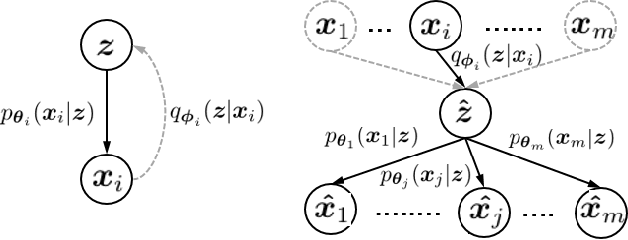


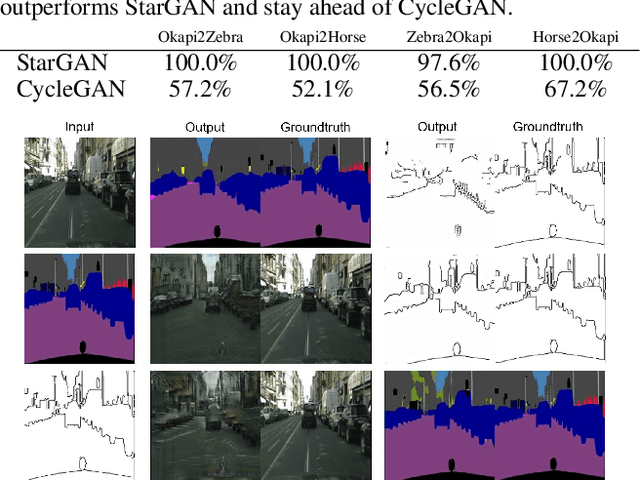
Abstract:A broad range of cross-$m$-domain generation researches boil down to matching a joint distribution by deep generative models (DGMs). Hitherto algorithms excel in pairwise domains while as $m$ increases, remain struggling to scale themselves to fit a joint distribution. In this paper, we propose a domain-scalable DGM, i.e., MMI-ALI for $m$-domain joint distribution matching. As an $m$-domain ensemble model of ALIs \cite{dumoulin2016adversarially}, MMI-ALI is adversarially trained with maximizing Multivariate Mutual Information (MMI) w.r.t. joint variables of each pair of domains and their shared feature. The negative MMIs are upper bounded by a series of feasible losses that provably lead to matching $m$-domain joint distributions. MMI-ALI linearly scales as $m$ increases and thus, strikes a right balance between efficacy and scalability. We evaluate MMI-ALI in diverse challenging $m$-domain scenarios and verify its superiority.
Recognize Foreign Low-Frequency Words with Similar Pairs
Jun 16, 2015
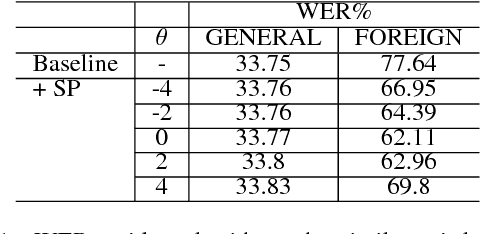
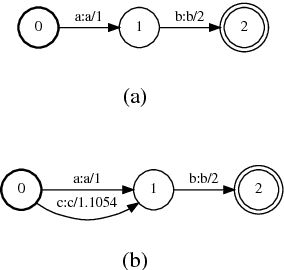
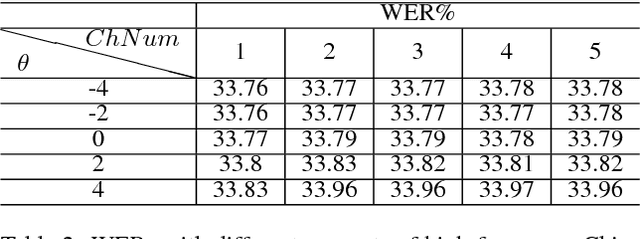
Abstract:Low-frequency words place a major challenge for automatic speech recognition (ASR). The probabilities of these words, which are often important name entities, are generally under-estimated by the language model (LM) due to their limited occurrences in the training data. Recently, we proposed a word-pair approach to deal with the problem, which borrows information of frequent words to enhance the probabilities of low-frequency words. This paper presents an extension to the word-pair method by involving multiple `predicting words' to produce better estimation for low-frequency words. We also employ this approach to deal with out-of-language words in the task of multi-lingual speech recognition.
 Add to Chrome
Add to Chrome Add to Firefox
Add to Firefox Add to Edge
Add to Edge